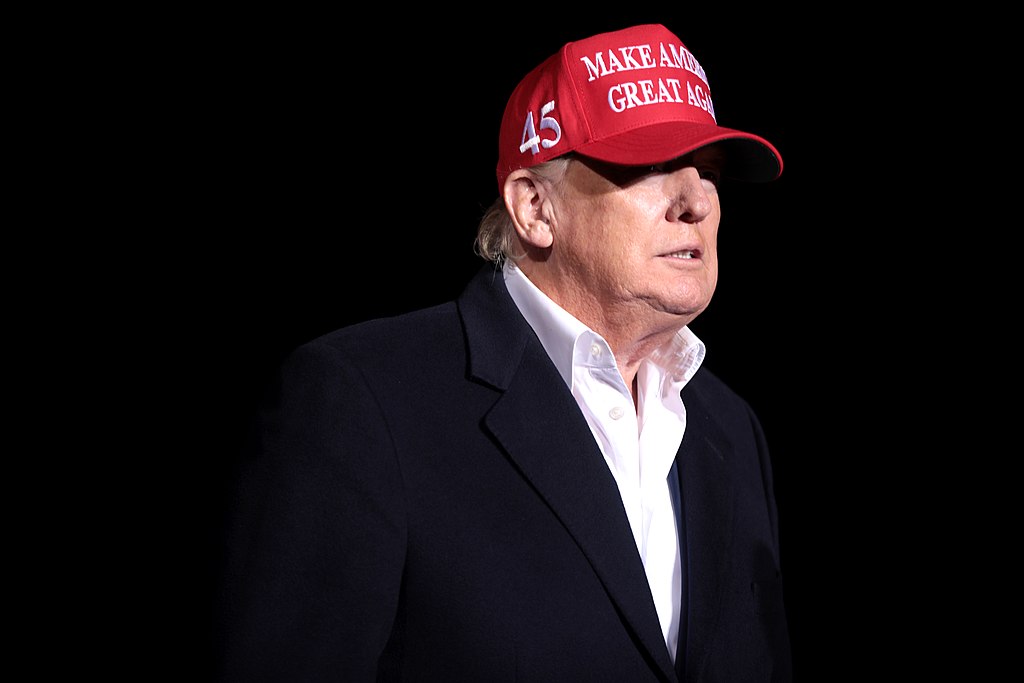Former President Donald Trump has introduced a bold economic proposal as part of his potential 2024 campaign platform, announcing that he intends to cap credit card interest rates at 10%. This sweeping plan, aimed at curbing the financial burdens faced by millions of American consumers, has sparked both enthusiasm and skepticism. While Trump's proposal appeals to those struggling with high credit card debt, questions remain about its feasibility and potential impact on the broader economy.
Trump’s plan, which surfaced during recent campaign appearances, suggests placing a hard limit on the interest rates credit card companies can charge consumers. Currently, credit card interest rates in the United States often exceed 20%, placing a heavy financial strain on individuals who carry balances from month to month. A cap at 10% would mark a significant shift in the financial landscape, potentially offering relief to millions of consumers but raising concerns among banks and credit institutions.
This proposal comes at a time when Americans are facing increasing financial pressure due to rising inflation and the lingering effects of the COVID-19 pandemic. Credit card debt has been on the rise, with many individuals relying on revolving credit to cover basic expenses. A cap on interest rates could provide much-needed relief for struggling households, potentially lowering monthly payments and reducing the total cost of carrying debt.
However, Trump's ambitious proposal has also drawn criticism from financial experts and industry leaders who question its practicality. Critics argue that such a cap could disrupt the credit market, leading to unintended consequences for consumers. Financial institutions rely on interest rates to manage risk, and a sharp reduction in allowable rates may force lenders to tighten their standards, making credit less accessible to those with lower credit scores. This could result in fewer options for consumers seeking credit, particularly for those in need of short-term financial assistance.
Additionally, industry insiders warn that capping credit card interest rates at 10% could have a ripple effect across the economy. Banks and credit card companies might respond by introducing new fees or limiting reward programs to offset the loss of revenue from interest. The proposal could also lead to job losses in the financial sector, as companies scale back operations to adjust to a new regulatory environment.
Economists have also pointed out that similar interest rate caps have been attempted at the state level, often with mixed results. While some consumers may benefit from lower interest rates, others could find it more difficult to obtain credit altogether. The question of whether a federally mandated cap would work on a national scale remains up for debate, and the specifics of how such a policy would be implemented are still unclear.
As Trump positions himself for another potential White House run in 2024, his credit card interest rate cap proposal is likely to become a focal point of discussion. While the idea may resonate with voters eager for relief from high credit card debt, its implementation would require significant regulatory changes and cooperation from Congress, which could prove challenging.
EconoTimes cannot independently verify the specifics of Trump’s proposed credit card interest rate cap or its potential impact on the economy. The plan remains speculative at this stage, and further analysis is required to determine its feasibility and long-term effects.



 Democratic Attorneys General Sue Trump Administration Over Proposed Limits on Gender-Affirming Care for Youth
Democratic Attorneys General Sue Trump Administration Over Proposed Limits on Gender-Affirming Care for Youth  White House East Wing Ballroom Plans Face Scrutiny Ahead of January Hearing
White House East Wing Ballroom Plans Face Scrutiny Ahead of January Hearing  Israel Advances Controversial Inquiry Bill Into October 7 Hamas Attack Amid Public Backlash
Israel Advances Controversial Inquiry Bill Into October 7 Hamas Attack Amid Public Backlash  Kim Jong Un Oversees Missile Test Amid Rising Korean Peninsula Tensions
Kim Jong Un Oversees Missile Test Amid Rising Korean Peninsula Tensions  NSW Passes Toughest Gun and Anti-Terror Laws After Bondi Beach Shooting
NSW Passes Toughest Gun and Anti-Terror Laws After Bondi Beach Shooting  China’s One-Child Policy Legacy Resurfaces After Death of Former Population Chief
China’s One-Child Policy Legacy Resurfaces After Death of Former Population Chief  US and Japan Fast-Track $550 Billion Strategic Investment Initiative
US and Japan Fast-Track $550 Billion Strategic Investment Initiative  Bolsonaro Endorses Son Flavio for Brazil’s 2026 Presidential Election From Hospital
Bolsonaro Endorses Son Flavio for Brazil’s 2026 Presidential Election From Hospital  Palau Agrees to Accept Up to 75 U.S.-Transferred Migrants in Deal Tied to Increased American Aid
Palau Agrees to Accept Up to 75 U.S.-Transferred Migrants in Deal Tied to Increased American Aid  Hanwha Signals Readiness to Build Nuclear-Powered Submarines at Philly Shipyard for U.S. Navy
Hanwha Signals Readiness to Build Nuclear-Powered Submarines at Philly Shipyard for U.S. Navy  Kim Jong Un Signals Continued Missile Development as North Korea Plans Five-Year Military Modernization
Kim Jong Un Signals Continued Missile Development as North Korea Plans Five-Year Military Modernization  U.S. Discusses Migrant Transfer Plan With Palau Despite Lawmaker Opposition
U.S. Discusses Migrant Transfer Plan With Palau Despite Lawmaker Opposition  Anutin Charnvirakul Named Bhumjaithai PM Candidate Ahead of Thailand’s February Election
Anutin Charnvirakul Named Bhumjaithai PM Candidate Ahead of Thailand’s February Election  U.S. Prioritizes Economic Pressure With Venezuelan Oil Quarantine as Sanctions Intensify
U.S. Prioritizes Economic Pressure With Venezuelan Oil Quarantine as Sanctions Intensify  U.S. Shifts Strategy Toward Economic Pressure With Venezuelan Oil Quarantine
U.S. Shifts Strategy Toward Economic Pressure With Venezuelan Oil Quarantine  Democratic Governors Urge Trump Administration to Lift Halt on East Coast Offshore Wind Projects
Democratic Governors Urge Trump Administration to Lift Halt on East Coast Offshore Wind Projects 































